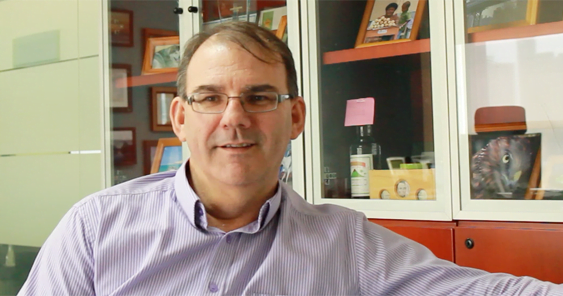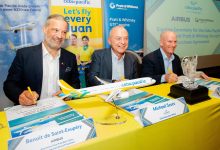While the approaching regional economic integration of ASEAN in 2015 brings opportunities for local brands, there are also many challenges that must be dealt with. Nielsen’s report, ASEAN 2015: Seeing around the corner, focuses on three key areas: the importance of economic, political and consumer change in the region; implications of ASEAN 2015 for businesses; and potential winning strategies.
“The recipe in the Southeast Asian market is one of high growth, large population, growing middle class. All these three things add up to quite an attractive proposition,” said Stuart Jaimeson, Nielsen Philippines managing director.
The ASEAN region has huge potential for growth in the coming years – Nielsen estimates Southeast Asia’s GDP will grow by close to 7 percent per annum over the next decade. Its population of 600 million includes a rapidly expanding middle class community who are establishing the financial means to move beyond subsistence living, Nielsen said.
According to Jamieson, the likelihood of ASEAN 2015 reducing barriers to entry into market will provide a great opportunity for local companies more than the multinational ones, as they are already in most of the ASEAN 2015 countries. “This is going to be an opportunity for those who haven’t moved outside of the Philippines to look at moving outside of the Philippines, because the barriers to entry into those other markets would be a lot lower,” he said.
On the other hand, as the Philippines is becoming an attractive market for outside companies, it is all the more important for local brands to plan and be prepared. “You’ve got to look at your strategies from two perspectives,” said Jamieson. These two perspectives are: Protect and Defend, and Seize the Moment.
Explaining ‘Protect and Defend’, Jamieson said companies must make sure they have the best position in the local market. “Take advantage of any cost breaks that the ASEAN 2015 may provide with shipping raw materials and things like that. So if you’re an importer of raw materials to make your products here in the Philippines, you may be able to get it at a cheaper price,” he said.
He warned that being in a category with a high market share would make one a target for other companies, thinking ‘There’s only one or two people doing that so maybe there’s room for a third.’
‘Seize the Moment’, meanwhile, means companies must prepare now. “Don’t wait for 2015 to happen. Don’t wait for the government to sort of ring the bell and go, ‘Okay, it’s happening,'” Jamieson said.
He urged companies to start planning now by looking at opportunities, cost base, and labor. “Don’t wait, because if you wait everyone else around you won’t have waited. Therefore you will be last out of the gate and you might find that a lot of the opportunities that you have may have dissipated because someone else has beaten you to the point,” he said.
For companies who are interested in venturing out of the Philippines, Jamieson stressed the importance of research. “They have to look at some of these countries – the ASEAN 2015 countries like Malaysia, Thailand Indonesia, Laos, Cambodia and Myanmar, and look at is there an opportunity for me to replicate what I am doing here in the Philippines in those other markets in a small way,” he said.
At the same time, they must also maintain their performance locally, in order to remain strong despite the possibility of increased competition from other markets. “The hardest thing for people to come into a country is if I’m a really strong local brand and I’ve got a local affinity with the population I’ve gotta make sure I’m continuing that message,” he said.
Jamieson noted that the strength of local brands is their relationship with the local community, and brands should not lose sight of this. “You don’t want to drop your focus on your local market to look at overseas opportunities. You need to do both. You need to have a real focus on continuing to do what you do really well in your local market,” he said, adding that it’s important to keep the customer base very satisfied.
Explaining that the danger is higher where there are fewer big players in a category, Jamieson said it’s important for brands to find out where they can make a difference. “Have a look at the categories, have a look at the makeup of the categories, have a look at the share that the players have in each of those categories. Go for those ones where you think your proposition is going to add value to the category and offer the consumer more choice,” he said.
According to Jamieson, research is the success factor for Filipino companies that have expanded overseas. “You just don’t go in to a market completely blind because you just want to be in Thailand. You look at the category, you look at the opportunity, you look at the consumer base, you look at ‘What value can I add to that category whether it be a quick service restaurant, an airline, or a bank.”
Labor drain
Jamieson warned that as ASEAN 2015 may result in a labor drain in certain markets, business owners must take care of their talent to avoid losing talent. “I think keeping an eye on talent, making sure that the talent that you have in your own organization is being well-looked after is going to be really important,” he said, noting that this is of particular concern in the Philippines, where some 10 million are already overseas workers.
Another thing that businesses should be aware of is potential efficiencies in the supply chain as a result of tariffs on imports and export duties being lifted, as a result of ASEAN 2015. “Looking at where you source your materials from, is an ASEAN 2015 country now going to be an easier, more profitable choice than sourcing materials outside an ASEAN 2015 country?” he said.
The most important thing at this point, Jamieson said, is still research. “If you don’t know enough about it, go find more about it. If you do know about it, what are you doing about it? Don’t be an ostrich. Don’t put your head in the sand. Even if you decide not to do anything about it, you’ve made a decision,” he said.









